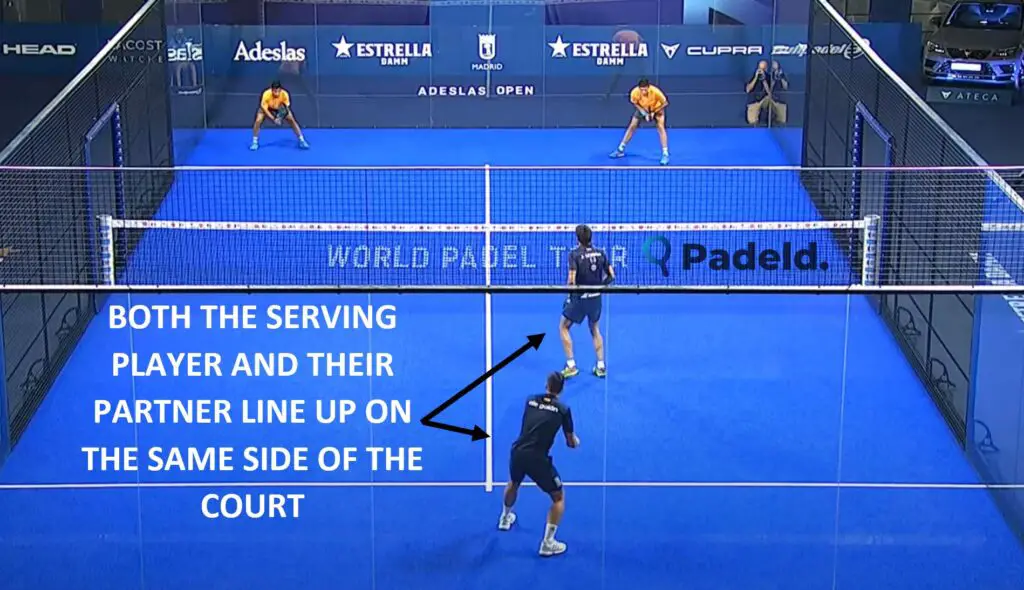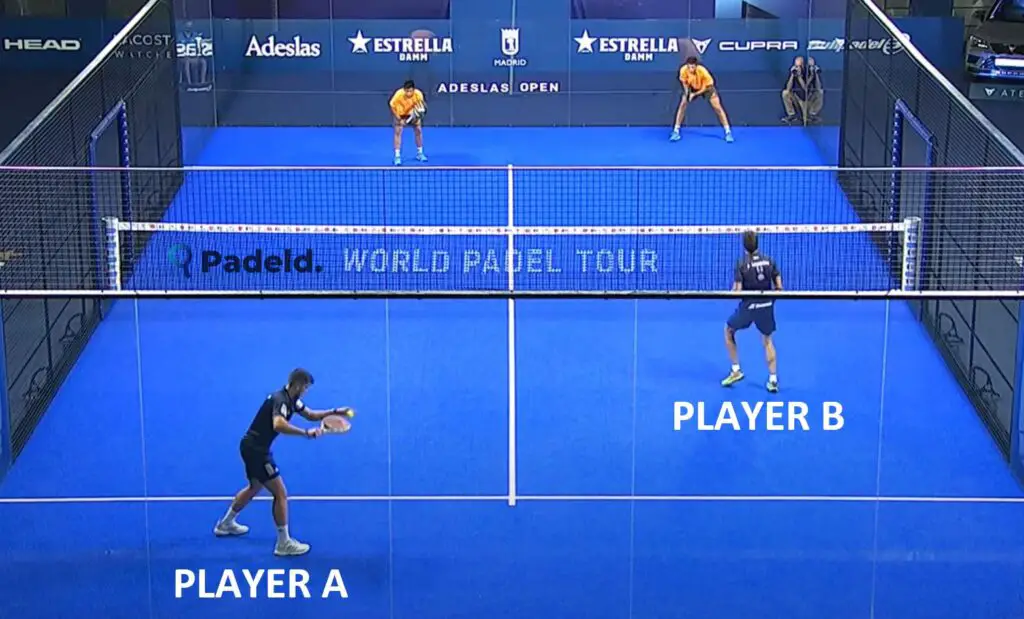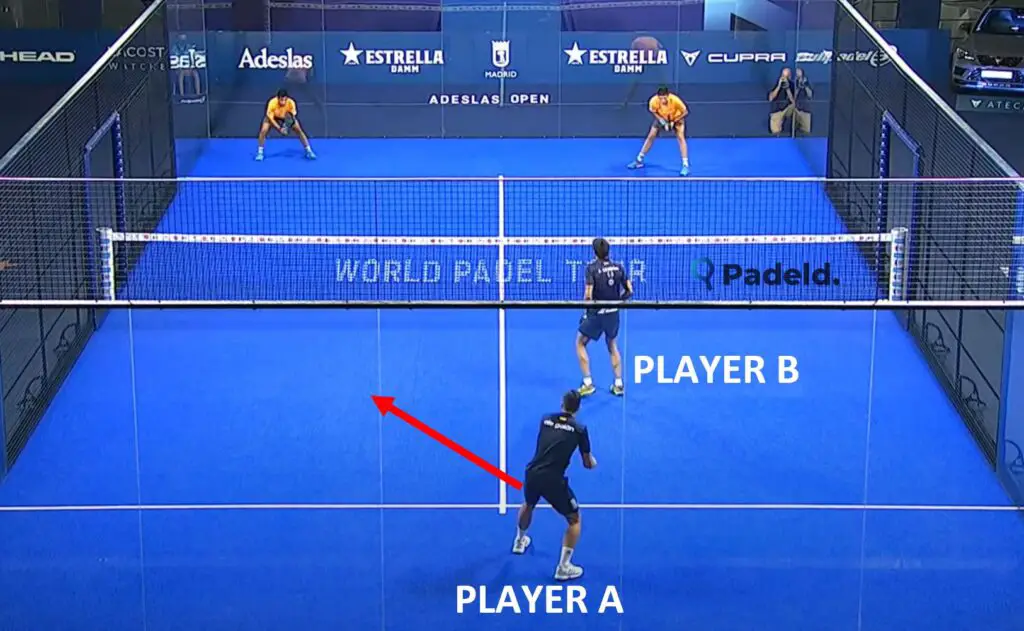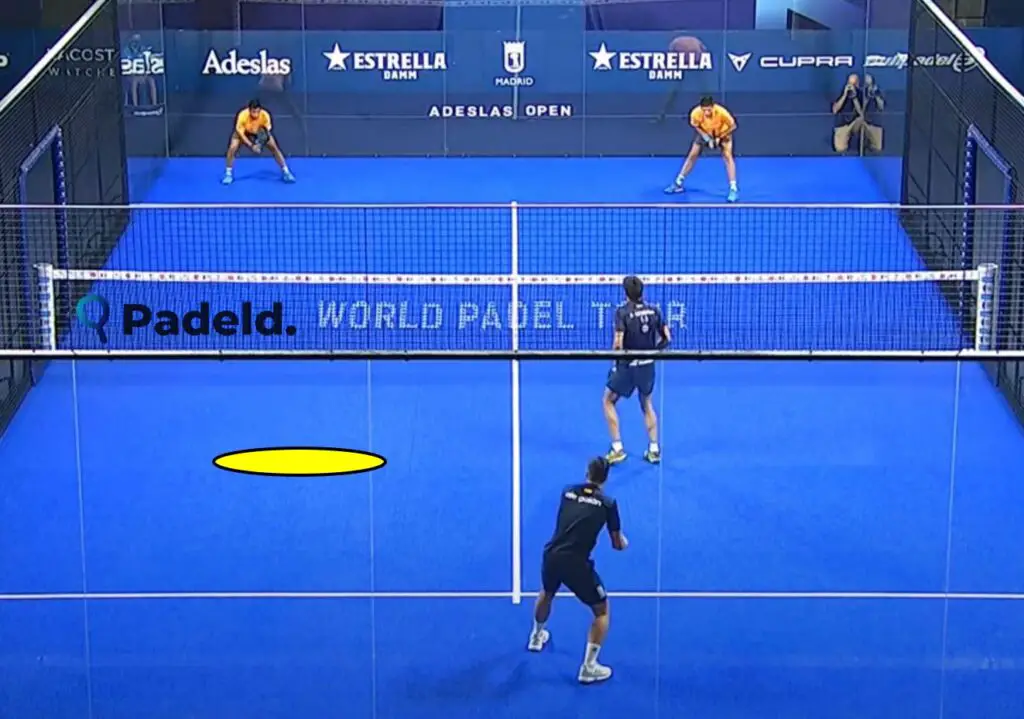When you’re new to padel, it does seem like an incredibly simple game. Both teams are trying to gain the upper hand in rallies before smashing the ball out of the court or hitting it out of the reach of their opponents. However, as I’ve gained more experience in the sport in the last year or so, I’ve started to notice all sorts of different aspects of the game that aren’t necessarily that noticeable when you first begin to watch!
Getting inside the mind of padel players and figuring out why they make the decisions they do is something that fascinates me. Take the serve for example. Not only are there a variety of different serve techniques that players can use and different areas of the court they can target, but there’s also a few different positions that players can stand in while they serve. One of these is known as the ‘Australian formation’ – and that’s what I’ll be talking about in this post!
I’ll cover what the Australian formation is, why padel players may choose to use it, and we’ll also look at some examples of it from the professional padel circuits. By the end of this post, you should have a much better understanding of this tactic. You’ll also have all of the info you need in order to start using it at the correct moments in your own padel matches! Let’s get into it…
So, what is the ‘Australian formation’ in padel?
The Australian formation is a serving position where the serving player & their partner will stand on the same side of the court. This differs from the normal formation, where players will be stood on opposite sides. This formation can help ensure that each player is playing on the side of the court that suits them.
If you want to see what the Australian formation looks like, check out the diagram below! It’s important to note that this formation is a pre-serve position, and that as soon as the ball is hit the serving player will immediately begin to move into a better position to cover the open side of the court.

As you can see, when players are in the Australian formation they are almost directly in line with each other. If you and your partner are using this formation for the first time, make sure that the player who is positioned towards the front of the court doesn’t block the view of the serving player. The player at the front of the court should move themselves well out of the way, giving the serving player the option to serve towards the centre line as well as the side glass if they wish.
When Should You Use The Australian Formation In Padel?
The thing people want to know the most about this serving formation is when you should use it – so allow me to give you the answer!
The first sign that you should be considering using the Australian formation is when both players in a padel duo have a particular side of the court that they are much more effective on. For example, if you’ve played on the right hand side of the court for your whole career and your partner is more comfortable on the left, the Australian formation may be a good idea for you to use on some serves. If you and your partner are relatively interchangeable and both equally as strong on both sides of the court, then the Australian formation may not benefit you that much.
So, if you’re part of a duo where both players are much better on one side of the court than another, there’s one more thing you should look for to determine when to use this formation. Basically, you should only really use the Australian formation when the serving player is forced to serve from the side of the court that they are weakest on.
To give you an example of what I mean, imagine you have two players on a team – player A and player B. Player A is much better when playing on the left side of the court, and player B is much better when playing on the right. When player A is serving from the left side of the court (the side on which they’re most comfortable), player B should stand over on the right. Then, once the ball is served, each player is already on their usual sides of the court, ready to continue the point. This is the normal serving formation, shown in the photo below.

Things change a little when player A is forced to serve from the right side of the court (the side they’re weakest on). This is when most duos will use the Australian formation! This formation allows player A to line up on the right hand side in order to serve, but also positions player B on this same side of the court, as that is the side they’re comfortable playing on. Once player A has hit the serve, they simply need to move across to the left side of the court, and both players are back in their usual positions.

Some padel duos will feature one right handed player and one left handed player. In this situation it’s common for the left handed player to play primarily on the right hand side of the court, and the right handed player to play on the left. This is because it’s much easier for them to hit forehand cross-court shots from these positions. Because you want each player playing on a specific side of the court, there may be a need for duos like this to use the Australian formation. For example, when the left handed player is serving from the left side of the court (their weaker side), the Australian formation should be used to give them an easy transition back to the right hand side. The same goes for the right handed player when serving from the right.
There may also be tactical or ‘matchup’ based reasons for using the Australian formation. For example, if your opponents have a player that is particularly weak and you want one of your players to always be lined up diagonally opposite them to target them with cross-court shots, the Australian formation will come in handy. Imagine the non-serving player is the one that is going to target the opponent who is playing on the right side of the court, and the serve is being hit from the left. The Australian formation should be used here to allow the non-serving player to line up on the left, with the serving player moving away to the right once the ball has been struck.
What Should You Do After Serving From The Australian Formation?
When you use the Australian formation, you are leaving one side of the court completely open as you strike the ball. When your opponent returns the serve, it is more than likely that they will attempt to hit the ball back towards this open side in order to win the point quickly. Therefore, after hitting the serve from this formation, the serving player should immediately move to cut off the angle for the return.

A lot of newcomers to padel will hit the serve and then stand still and ‘ball-watch’. Instead, you should start teaching yourself to immediately think about the shot your opponent is going to play in reply, and to move into a position that will allow you to easily negate or counter that shot.
Where exactly the serving player moves to will depend on the direction that they hit the serve in the first place. For example, in the photo below, you can see that the serving player has struck the serve towards the centre line of the court. This means that they probably won’t have to move as far across the court in order to cover the return, as it will be harder for the returner to hit the ball towards the glass from this position. However, hitting to the glass will not be impossible, so the serving player will have to be prepared to move swiftly across to cover that shot if it happens.

If the serve is aimed more towards the side glass, then the serving player should a bit further across the court. This is because there is a much higher chance that the returner will hit the ball straight down the side of the court when returning this type of serve, rather than hitting back towards the centre of the court.

As a general rule, I’d always suggest that after you’ve hit a serve from the Australian formation, you should move yourself forwards into a central position close to the one highlighted below. This type of movement gets you close to the net and also allows you to cover return shots in all directions.

Below you can see some examples of how Alejandro Galan will move across the court after he’s hit the ball from the Australian formation. Take note of how quickly he shifts his position, and notice that by the time the ball has been returned, he’s moved fully forwards and across the court to cover the angle. When he serves out wide towards the glass, he does go slightly further across the court than when he serves towards the body of the returning player or down the centre line.
Conclusion
I hope you enjoyed this post! I tried to give you an in-depth look into what the Australian formation is and how you can use it to benefit your game. To summarise the main points, the most important aspects of this formation are using it at the right time, and ensuring you get in the correct position to cover the returns once you’ve hit the ball!
If you want to learn more about serving in padel, which is a hugely important part of the game, click here to read about where you can (and should) be aiming your serves. Additionally, you can read about where you should position yourself to receive a serve by reading my post linked here!
